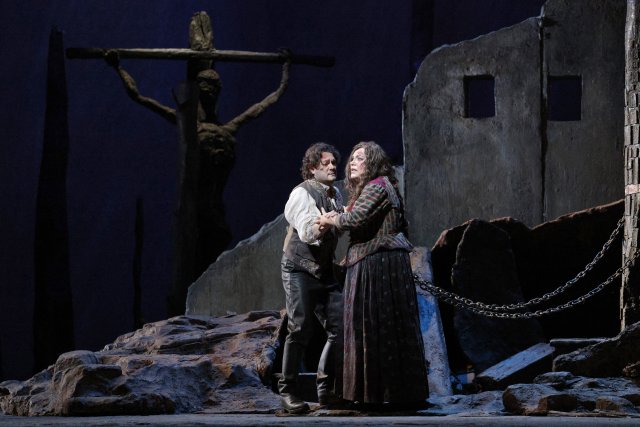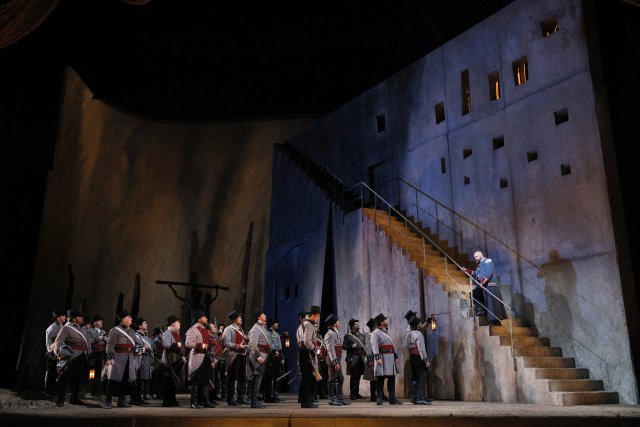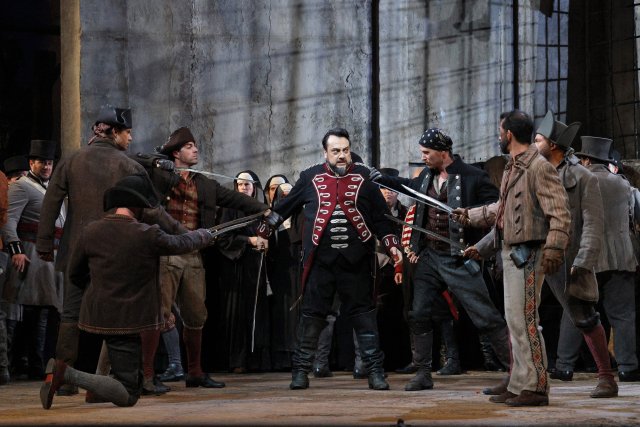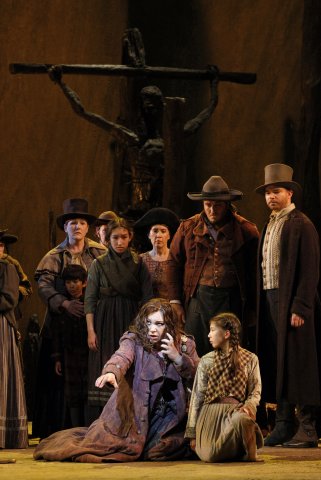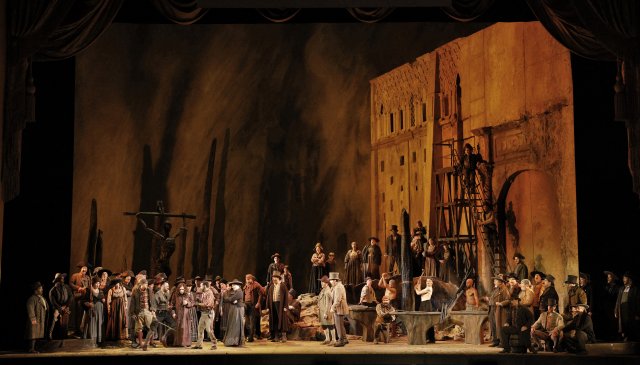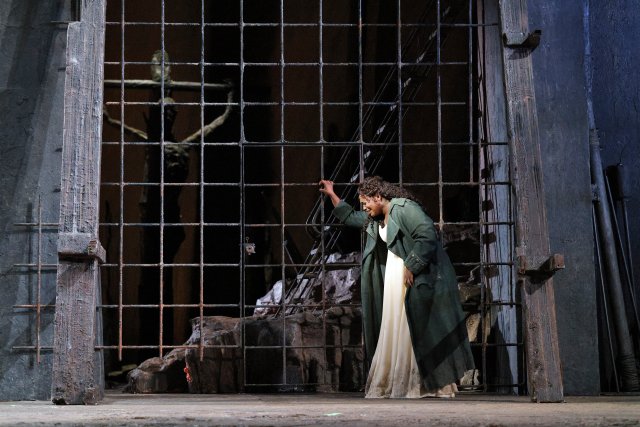Il Trovatore
One of Verdi's Most Challenging and Emotional Operas
By: Victor Cordell - Sep 19, 2023
When asked about how to cast “Il Trovatore,” San Francisco Opera Music Director Eun Sun Kim says you simply enlist the five greatest voices in the world. Why such an extraordinary need? It starts with roles that demand considerable vocal range. Then what begins as beautifully lyric singing turns to highly dramatic. And finally, a great deal of stamina is required, so that cuts are often made from the score to preserve the singers’ voices. San Francisco Opera’s joint production with the Metropolitan Opera and the Lyric Opera of Chicago soars with stellar voices and stupendous staging.
Debuted in 1853, Verdi’s “Il Trovatore” stands in the middle of perhaps the greatest three opera sequence by any composer. Preceded by “Rigoletto” and followed by “La Traviata,” all three are artistic masterpieces as well as crowd favorites.
Critics nitpick even the greatest works, and it is easy to criticize the “Il Trovatore” libretto. Situations are unlikely, but this is not Logic 101. Characters are rigid and obsessive, but that makes them passionate and vivid. Revenge is taken to unworldly limits, but otherwise we would have pablum unfit for our viewing pleasure.
Musically, themes and tones recur. But that music! Every phrase from beginning to end resonates melodically. Memorable set pieces infuse the score. With its urgency, intensity, and propulsive music, it is deservedly one of the most popular opera works in the repertory. One oddity that is inconsistent with the passion in the action, however, is the extent of long stand-and-deliver arias even to otherwise empty stages. The good news is that the three most prominent occur at the outset, before the emotion builds.
The title character is Manrico, a troubadour and leader of a Roma troupe. Unbeknownst to anyone but his adoptive mother, he is of noble blood and the brother of his arch enemy, Count di Luna. They contest not only in the communal and political world but for the love of a woman, Leonora.
Arturo Chacón-Cruz plays Manrico. Other than the “Anvil Chorus,” which is known well beyond the opera circle, Manrico is endowed with the most famous and perhaps most challenging solo piece from the opera. In the high tessitura cabaletta “Di quella pira,” (Of that pyre), he responds to learning that his mother, Azucena, will be burned at the stake, like her mother before her. While the tenor’s voice is somewhat cloaked, he otherwise acquits himself well, as do baritone George Petean as the Count and bass Robert Pomakov as Ferrando, captain of the Count’s army.
But the emotional center of the opera and the more compelling vocal performances belong to the two leading women. A spectacular soprano Angel Blue performs Leonora, a lady-in-waiting to the Princess of Aragon. Although Leonora is of the noble class and is loved by Count di Luna, her love is for Manrico. Verdi gives his soprano plenty to work with - trills, runs, and leaps, with great dynamics and an abundance of highly inflected vocalization. Blue’s full tremolo and rich timbre fill the house throughout her range in both delicate and full throttle passages.
Yet the heart and viscera of “Il Trovatore” reside with the highly challenging and gutsy role, Azucena, a plum mezzo assignment. She vowed revenge when di Luna’s father burned her mother at the stake. An added tragedy was that Azucena accidently threw her own son into the fire that consumed her mother but then began her revenge by kidnapping the old Count’s other infant boy, who would become her adopted son Manrico. Ekaterina Semenchuk represents the prototypical Azucena – magnetic, scenery chewing, anguished, intense, and with great vocal range able to make deep dives to her vocal bottom.
Eun Sun Kim conducts the orchestra with conviction, though instruments overpower singers on a couple of occasions. Her brisk decisiveness is evident throughout but particularly notable in the “Anvil Chorus.”
The other star of the show is Charles Edward’s immense, imposing, and impressive set design under the overall stage direction of David McVicar. Inspired by Spaniard Francisco Goya’s series of paintings “The Disasters of War,” an extract from the work which is the size of the proscenium arch is represented on a false curtain. The set itself towers over the action, with a massive building wall probably 30 feet tall and a single-run, outside staircase running its height and width. What’s more, this colossal structure rotates on the stage to reveal two more voluminous facings which are then customized to meet the needs of the respective scenes.
As expected from witnessing this great opera performed by this great company, San Francisco Opera’s “Il Trovatore” offers an outstanding evening of cultural enjoyment.
“Il Trovatore,” composed by Giuseppe Verdi with libretto by Salvadore Cammarano and based on the play by Antonio Garcia Gutierrez, is presented by San Francisco Opera and plays at War Memorial Opera House, 301 Van Ness Avenue, San Francisco, CA through October 1, 2023.

